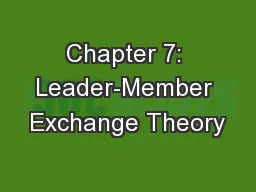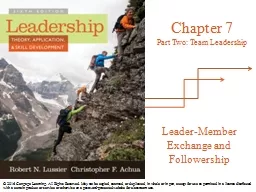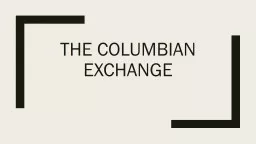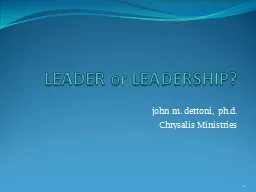PPT-Chapter 7: Leader-Member Exchange Theory
Author : alexa-scheidler | Published Date : 2018-09-21
Overview LMX Theory Description LMX Theory Perspective Early Studies Later Studies Phases in Leadership Making How Does the LMX Approach Work Peter G Northouse
Presentation Embed Code
Download Presentation
Download Presentation The PPT/PDF document "Chapter 7: Leader-Member Exchange Theory" is the property of its rightful owner. Permission is granted to download and print the materials on this website for personal, non-commercial use only, and to display it on your personal computer provided you do not modify the materials and that you retain all copyright notices contained in the materials. By downloading content from our website, you accept the terms of this agreement.
Chapter 7: Leader-Member Exchange Theory: Transcript
Download Rules Of Document
"Chapter 7: Leader-Member Exchange Theory"The content belongs to its owner. You may download and print it for personal use, without modification, and keep all copyright notices. By downloading, you agree to these terms.
Related Documents














